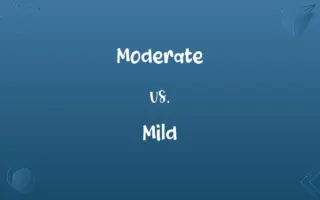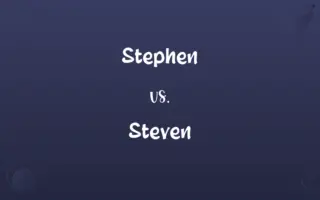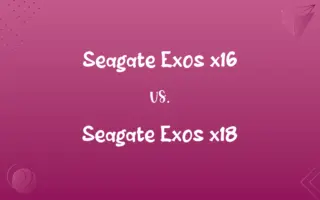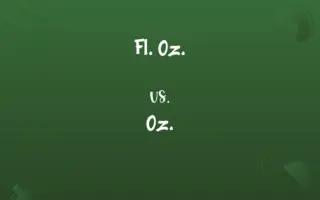Friend Function vs. Friend Class: Know the Difference

By Shumaila Saeed || Published on February 10, 2024
A Friend Function can access private members of another class, while a Friend Class has all its functions as friends of another class, enabling access to its private members.
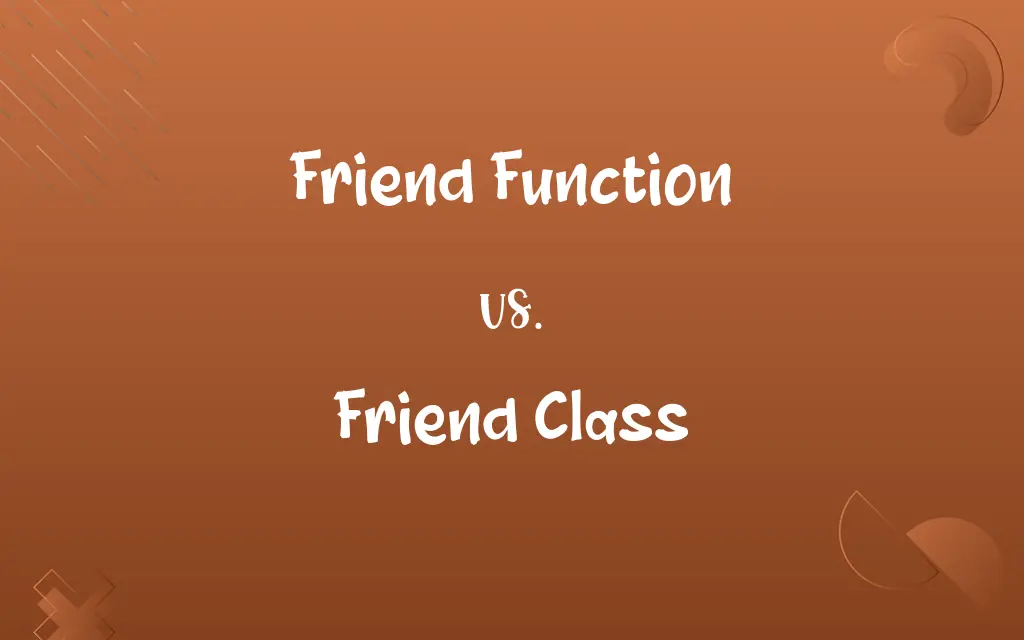
Key Differences
A Friend Function is a function declared with the friend keyword inside a class, allowing it to access the private and protected members of that class. A Friend Class, on the other hand, is a class whose all member functions are declared as friends of another class, giving them access to its private and protected members. The key difference lies in the scope of access granted - specific functions versus all functions of a class.
Shumaila Saeed
Feb 10, 2024
The concept of a Friend Function is utilized when specific external functions require access to the private members of a class without being a member of that class. In contrast, a Friend Class is used when an entire external class needs access to the private members of another class. The former is more selective and precise in granting access, while the latter is more extensive.
Shumaila Saeed
Feb 10, 2024
Friend Functions promote encapsulation by allowing controlled access to the private members of a class, typically for specific operations. Friend Classes, however, offer a broader level of access which could potentially lead to more extensive coupling between classes. Friend Functions are often used for operator overloading, whereas Friend Classes might be used in more complex relationships like class hierarchies.
Shumaila Saeed
Feb 10, 2024
Implementing a Friend Function involves declaring the function as a friend inside a class, and then defining it normally outside the class. For a Friend Class, the entire class is declared as a friend inside another class, meaning all its member functions can access the private data of the class in which it is a friend. This reflects a difference in implementation complexity and the nature of access.
Shumaila Saeed
Feb 10, 2024
In terms of design philosophy, Friend Functions are often seen as a way to extend functionality of a class without altering its interface, maintaining a tighter encapsulation. Friend Classes suggest a closer relationship between two classes, often used in designs where classes are mutually dependent or closely related in functionality.
Shumaila Saeed
Feb 10, 2024
ADVERTISEMENT
Comparison Chart
Access Scope
Specific functions access private members of another class.
All functions of the class access private members of another class.
Shumaila Saeed
Feb 10, 2024
Usage
For individual functions requiring access.
When an entire class needs access.
Shumaila Saeed
Feb 10, 2024
Encapsulation & Coupling
Promotes encapsulation, less coupling.
Potentially increases coupling between classes.
Shumaila Saeed
Feb 10, 2024
Implementation Complexity
Declared within a class, defined outside.
Entire class declared as a friend.
Shumaila Saeed
Feb 10, 2024
Design Philosophy
Extends functionality without altering class interface.
Implies closer, often mutual, dependency between classes.
Shumaila Saeed
Feb 10, 2024
ADVERTISEMENT
Friend Function and Friend Class Definitions
Friend Function
A Friend Function is a function declared with the friend keyword in a class's definition.
Friend void resetCounter(Counter& c); can modify private attributes of Counter.
Shumaila Saeed
Jan 24, 2024
Friend Class
A Friend Class is a class with all its member functions able to access another class's private data.
Friend class Administrator; allows Administrator's methods to modify another class's private fields.
Shumaila Saeed
Jan 24, 2024
Friend Function
A Friend Function is an auxiliary function that a class allows to access its non-public members.
By declaring friend void serialize(Object& obj);, serialize can access Object’s private members.
Shumaila Saeed
Jan 24, 2024
Friend Class
A Friend Class is a class whose members have access to the private and protected members of another class.
If class Checker is a friend of class Data, Checker's methods can access Data's private attributes.
Shumaila Saeed
Jan 24, 2024
Friend Function
A Friend Function is a non-member function that has access to the private and protected members of a class.
Void showData(MyClass obj) declared as a friend function can access private members of MyClass.
Shumaila Saeed
Jan 24, 2024
ADVERTISEMENT
Friend Class
A Friend Class is a class granted special access privileges by another class.
In declaring friend class Logger;, Logger can access all private parts of the class it’s a friend of.
Shumaila Saeed
Jan 24, 2024
Friend Function
A Friend Function is a function not belonging to any class but able to access private data of a class.
The function friend int max(const Number& n); can access the private parts of the class Number.
Shumaila Saeed
Jan 24, 2024
Friend Class
A Friend Class is a class associated with another, with permissions to access its non-public areas.
By making class Network a friend of class Computer, Network can access Computer’s private network settings.
Shumaila Saeed
Jan 24, 2024
Friend Function
A Friend Function is an external function granted special access privileges by a class.
Friend void printCoordinates(Point p); allows this function to access Point's private data.
Shumaila Saeed
Jan 24, 2024
Friend Class
A Friend Class is an external class given comprehensive access to a class's private members.
Declaring friend class TestSuite; permits TestSuite to access and modify private parts for testing.
Shumaila Saeed
Jan 24, 2024
Repeatedly Asked Queries
What is a Friend Function?
A Friend Function is a non-member function with access to a class's private and protected members.
Shumaila Saeed
Feb 10, 2024
Why use a Friend Function?
For specific, external functions to access private data of a class, typically for operations like operator overloading.
Shumaila Saeed
Feb 10, 2024
Why use a Friend Class?
To allow an entire class access to another class's private data, often in tightly coupled class designs.
Shumaila Saeed
Feb 10, 2024
How do you declare a Friend Class?
By declaring the entire class as a friend inside another class's definition.
Shumaila Saeed
Feb 10, 2024
How is a Friend Function declared?
By using the friend keyword inside a class's definition.
Shumaila Saeed
Feb 10, 2024
Can a Friend Function be a member of another class?
No, Friend Functions are not members of any class.
Shumaila Saeed
Feb 10, 2024
Is a Friend Function part of the class interface?
No, it's external to the class but has special access privileges.
Shumaila Saeed
Feb 10, 2024
Are Friend Functions part of object-oriented design?
Yes, they are used in OOP for specific access needs, respecting encapsulation principles.
Shumaila Saeed
Feb 10, 2024
Is a Friend Function visible in the class's public interface?
No, it's declared inside the class but defined outside and not part of the public interface.
Shumaila Saeed
Feb 10, 2024
Can a Friend Class be a friend to multiple classes?
Yes, a Friend Class can be declared as a friend to more than one class.
Shumaila Saeed
Feb 10, 2024
Can a Friend Class access all private members of another class?
Yes, all its member functions can access the private and protected members.
Shumaila Saeed
Feb 10, 2024
Does a Friend Class increase coupling between classes?
Yes, it generally increases coupling due to broad access rights.
Shumaila Saeed
Feb 10, 2024
Can a Friend Function be a template?
Yes, template functions can also be declared as friend functions.
Shumaila Saeed
Feb 10, 2024
Can a Friend Function be declared in multiple classes?
Yes, a Friend Function can be a friend to more than one class.
Shumaila Saeed
Feb 10, 2024
What is a Friend Class?
A Friend Class is a class all of whose member functions can access another class's private and protected members.
Shumaila Saeed
Feb 10, 2024
Does a Friend Class violate encapsulation?
It can potentially weaken encapsulation by broadening access to private data.
Shumaila Saeed
Feb 10, 2024
Do Friend Classes and Functions break abstraction?
They can, if not used judiciously, as they provide external entities access to a class's internals.
Shumaila Saeed
Feb 10, 2024
Are Friend Functions commonly used in C++?
Yes, they are a standard feature in C++, particularly for operator overloading.
Shumaila Saeed
Feb 10, 2024
Is there a limit to the number of Friend Classes a class can have?
No, there's no technical limit to the number of friend classes.
Shumaila Saeed
Feb 10, 2024
Can a Friend Function access all private members of a class?
Yes, a Friend Function can access all private and protected members of the class it is a friend to.
Shumaila Saeed
Feb 10, 2024
Share this page
Link for your blog / website
HTML
Link to share via messenger
About Author
Written by
Shumaila SaeedShumaila Saeed, an expert content creator with 6 years of experience, specializes in distilling complex topics into easily digestible comparisons, shining a light on the nuances that both inform and educate readers with clarity and accuracy.




















